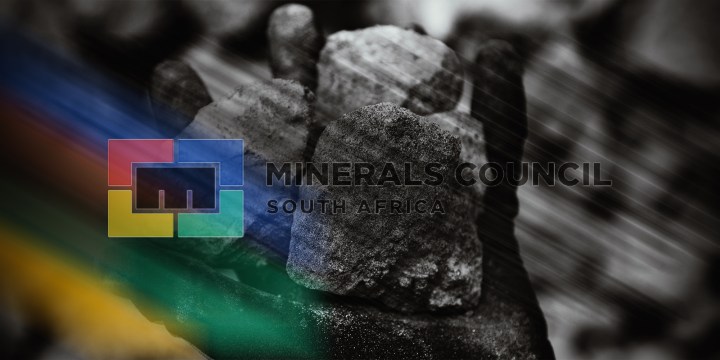BUSINESS REFLECTION
Loaded for Bear: The curious case of cadastres, capital and cadres

The long-awaited announcement of the selected provider for a South African mining cadastral system seems imminent. This saga raises several questions, including two revealing ones. Why was this a rare case of the government NOT accepting money from the industry? The other is: Why would the industry want a tool that is so revealing?
In March 2021, the Minerals Council SA – the main body representing the mining industry – was getting desperate.
It had recently emerged that the backlog of applications for mining and exploration activities of various stripes had reached more than 5,000, an impasse that was holding up badly needed investment into the sector.
Based on member surveys, the Minerals Council estimated this was holding up a pipeline of projects worth about R20-billion.
Read more here: Minerals Council offers to part pay cost of replacing Samrad system).
This was partly because the bespoke Samrad system used by the Department of Mineral Resources and Energy (DMRE) was useless.
It also clearly reflected a wider dearth of capacity at the DMRE, fuelling concerns that a lack of transparency was concealing the spoor of corruption and incompetence.
So, the Minerals Council offered to partly fund the costs of replacing Samrad with a functional mining cadastral system, an online portal that displays a country’s mineral and other forms of natural wealth in a way that is accessible to the public.
And it can serve the dual function of showing the state of play of mining activities while allowing companies armed with this knowledge to apply for various kinds of exploration or mining rights.
Read more in Daily Maverick: Explainer: A mining cadastre and public transparency
The upshot was that the DMRE rebuffed the offer, and the process to replace Samrad has had a few twists and turns since. As The Dude would say in The Big Lebowski, the saga has been marked by “… You know, a lotta ins, lotta outs, lotta what-have-yous.”
But now, as Minerals and Energy Minister Gwede Mantashe announced last week – and the state IT agency Sita has since confirmed – the process to anoint the provider to replace Samrad is almost complete.
Read more in Daily Maverick: Cadastre evaluation concluded, as final stage to be finalised – Sita mining tender
With a ray of light now emerging at the end of this long tunnel, a couple of questions come to mind.
The first is: Why would the DMRE not accept an offer from the industry to help fund this process?
After all, the DMRE and other government departments do not blink when the mining sector goes beyond its mandatory social and labour plans by spending money to upgrade roads and provide other services in the areas where it operates – services that are the state’s responsibility.
The business/government initiatives to address the power and logistics crises, and the scourge of rampant crime, will also require a significant capital outlay from business, including the mining sector. And Treasury is not exactly flush.
With all this in mind, this appears to be a rare case of the DMRE saying no to an offer of financial assistance.
A revealing lens
One way to address that issue is to explore another question.
Why is the industry so keen on a tool that can unmask its activities in ways that will surely invite critical scrutiny?
The industry has long made it clear that it wants a proven, off-the-shelf cadastral system, such as the model used by neighbouring Botswana. And its portal – a product of US-based Trimble using technology developed in South Africa by Spatial Dimension – is extremely revealing.
As reported last year, it clearly shows a scramble for oil, gas and coal in Botswana, much of it centred on the Central Kalahari Game Reserve.
Read more in Daily Maverick: Botswana’s mining cadastre reveals hydrocarbon scramble in iconic Kalahari game reserve
The park’s eastern rim is also a hotspot for the exploration of a range of commodities including copper, gold, cobalt, manganese and platinum group metals.
This underscores the point that a cadastral system is not just a tool aimed at the mining and other extractive industries to attract investment. It can also assist NGOs, communities and the wider public to interrogate industry activities.
That’s the gift of transparency.
If the industry in Botswana has signed up for a portal that reveals its presence in national parks and other protected areas – and it’s a portal that it wants in place for South Africa – then it is clearly comfortable with this level of lucidity.
This speaks in part to the rise of ESGs – environmental, social and governance – concerns to the top of the corporate agenda in response to regulatory but also investor demands.
This can help investors make informed decisions.
For example, if you are not comfortable with mining or exploration in a national park or sensitive ecosystem, then you can invest in companies that don’t.
And conservationists, journalists and other interested parties have a path they can follow if they want to investigate such activities.
The mining industry in Africa has a lot of historical baggage, and for extractive industries more widely, a lot of this has been accumulated below the public radar.
Initiatives such as Botswana’s help to keep the industry and the government more accountable.
It is a case of business – or capital – seeking levels of transparency that can enhance accountability.
This brings us back to the question of why the DMRE has taken so long to replace Samrad – and even declined an offer to fund this – leading to a convoluted procurement process involving “a lotta ins, lotta outs, lotta what-have-yous”.
It seems that transparency is not something the DMRE abides. DM
















 Become an Insider
Become an Insider
Anything Mantashe touches, he destroys. The biggest obstacle to ending load-shedding, and is solely responsible for destroying the South African mining industry.